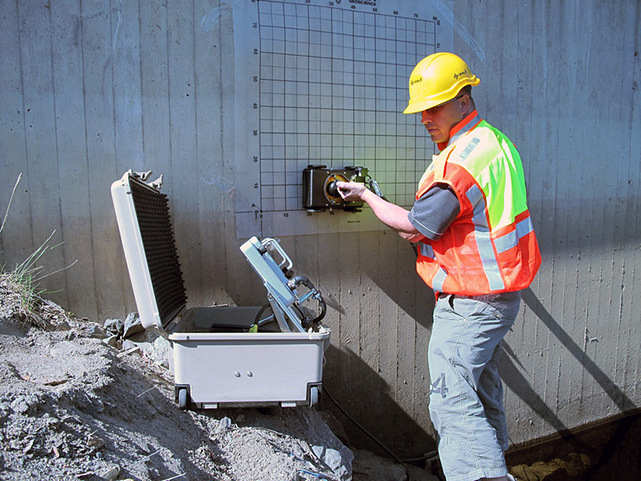RainierGPR Concrete Scanning: Advanced Solutions for Safe Building And Construction
RainierGPR Concrete Scanning: Advanced Solutions for Safe Building And Construction
Blog Article
The Significance of Exact Concrete Scanning in Finding Underground Hazards
The capability to properly discover and map these underground risks is not simply a matter of comfort but a vital facet of guaranteeing the safety and security of both construction workers and the integrity of the job itself. By deploying sophisticated scanning technologies and approaches, specialists can uncover covert risks, stop costly damages, and inevitably lead the means for smoother and safer building undertakings.
Advanced Scanning Technologies for Discovery
Sophisticated radar systems are changing the field of underground discovery by supplying unmatched precision and effectiveness. These sophisticated scanning innovations use ground-penetrating radar (GPR) to develop detailed pictures of subsurface structures, supplying insights into what lies below the surface with impressive clarity. By sending out high-frequency pulses right into the ground and gauging the representations, radar systems can identify variations in product structure and spot below ground dangers such as voids, cables, and pipes.
Among the crucial advantages of these sophisticated radar systems is their non-invasive nature, enabling comprehensive assessments without triggering damage to the existing structures. This not just ensures the safety of the surrounding setting yet also minimizes the need for costly repair services or disruptions to ongoing building and construction jobs. Furthermore, the real-time information given by these scanning innovations allows fast decision-making and enhances overall task efficiency.
Relevance of Subsurface Mapping

Precise subsurface mapping assists in stopping expensive problems to existing below ground infrastructure, minimizing the risk of crashes, and keeping task timelines. It allows project supervisors to make enlightened choices relating to website planning, devices implementation, and resource allotment. Additionally, subsurface mapping enables much better sychronisation among different groups servicing a job and helps in adhering to regulatory requirements connected to below ground energy discovery.
Mitigating Threats in Building Tasks
Efficient threat reduction strategies are important for guaranteeing the success and safety and security of construction jobs. One crucial facet of mitigating risks in building tasks is extensive planning and evaluation at the first stages.
Furthermore, developing clear communication channels among all project stakeholders and making sure rigorous adherence to safety and security protocols are important components of risk reduction. By proactively executing durable danger mitigation strategies, building tasks can reduce delays, price overruns, and safety and security occurrences, eventually leading to effective job outcomes.

Preventing Expensive Damages and Hold-ups
To minimize economic losses and job troubles, reliable techniques must be executed to stop costly damages and delays in building jobs. One critical method to achieve this is by carrying out complete concrete scanning prior to any kind of excavation work starts. By utilizing advanced scanning innovations such as ground-penetrating radar (GPR) and electromagnetic induction, building teams can accurately identify below ground threats like rebar, avenues, and other utilities. Determining these blockages beforehand aids in intending the task format extra effectively and avoiding potential damages during excavation.
Furthermore, investing in training programs for building and construction workers on the significance of concrete scanning and risk-free excavation practices can significantly lower the danger of accidents and hold-ups. Clear communication networks between job managers, designers, and on-site employees are also necessary to make certain that everybody recognizes the possible dangers and follows the needed protocols to avoid pricey damages. By prioritizing aggressive steps like concrete scanning and advertising a culture of security and understanding, building tasks can reduce the economic impact of unexpected underground blockages and prevent costly delays.
Ensuring Safety And Security of On-Site Personnel
By prioritizing aggressive procedures such as comprehensive training programs directory and clear interaction networks, construction tasks can guarantee the safety and security of on-site personnel amid the prospective dangers detected with concrete scanning. Appropriate training gears up workers with the understanding and abilities required to browse construction sites safely, specifically when hazards are determined through scanning processes. Training should cover hazard acknowledgment, emergency situation treatments, and the proper application of individual protective equipment to mitigate dangers properly.
Furthermore, developing clear interaction networks is crucial for disseminating info concerning identified risks quickly. This makes sure that all on-site workers understand prospective threats and can take needed preventative measures to stay clear of crashes. Normal safety and security briefings, toolbox talks, and constant updates concerning scanning results help keep everybody educated and proactive in preserving a secure workplace.
In addition, implementing stringent adherence to security protocols and regulations, performing routine security audits, and cultivating a society of safety consciousness amongst workers are important elements in guaranteeing the well-being of on-site personnel throughout building and construction tasks - RainierGPR Concrete Scanning. Positive precaution not only shield employees from harm yet also contribute to the overall success and performance of the job
Final Thought
Using advanced scanning modern technologies and subsurface mapping helps alleviate threats in building jobs, avoiding pricey problems and delays. It is critical for building and construction companies to prioritize the usage of precise scanning methods to reduce possible threats and ensure a smooth building procedure.

By proactively executing robust threat mitigation methods, building projects can minimize hold-ups, expense overruns, and safety and security cases, eventually leading to effective job results. - RainierGPR Concrete Scanning
To decrease monetary losses and task troubles, reliable methods need to be carried out to avoid pricey problems and hold-ups in building jobs. By prioritizing aggressive steps like concrete scanning and promoting a society more tips here of security and awareness, construction tasks can lessen the financial impact of unforeseen below ground obstructions and avoid pricey delays.
By prioritizing proactive measures such as thorough training programs and clear interaction channels, construction tasks can guarantee the safety of on-site workers amid the potential hazards spotted via concrete scanning. Using see post advanced scanning innovations and subsurface mapping aids reduce dangers in building and construction jobs, preventing expensive damages and delays.
Report this page